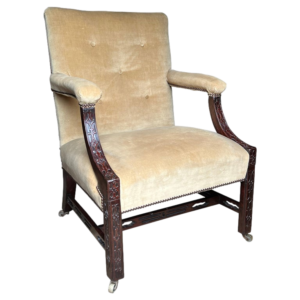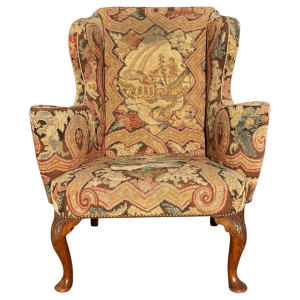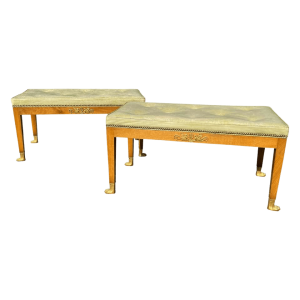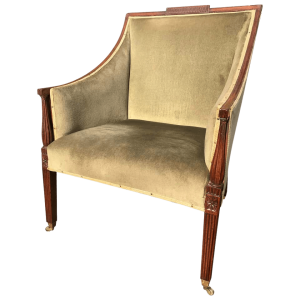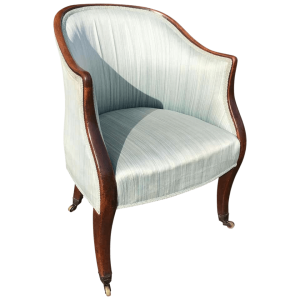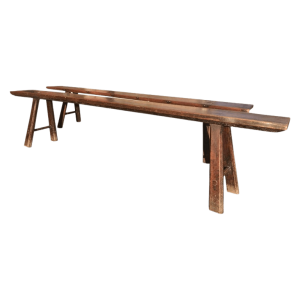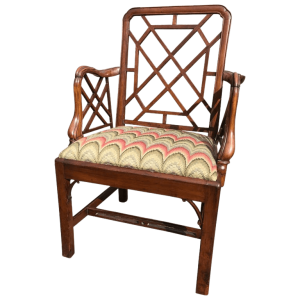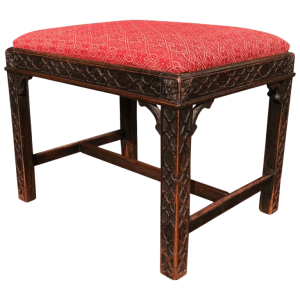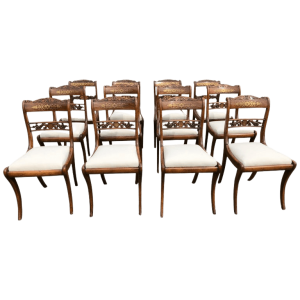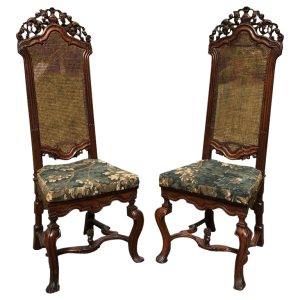Seating
16th – 19th centuries
From historical records and excavations we know antique seating can date from Babylonian, ancient Egyptian, Roman and Greek times, but for our purposes these are irrelevant as you are extremely unlikely to encounter any outside the British Museum. Most were made of bronze, stone, bone, ebony etc. However there were classical revivals mirroring these early styles, mainly produced in the early-19th century, which are highly sought after by collectors. In pre-history people sat on the floor. Only in early medieval times in England was seating becoming adopted, particularly in ecclesiastical (pews) and aristocratic environments, where refectories had long tables with simple benches and stools. From circa 1450 the first chairs evolved resembling something we would recognise today. Stools acquired backs and arm supports, although remaining available only to the privileged few as status symbols. The higher up the social scale the more likely one would have access to seating. Allowing anyone to be seated in a Royal presence was considered the ultimate confirmation of social status, and more often than not strictly reserved for the monarch's immediate family (often erupting in heated arguments), with most left standing, some seated upon low stools, with very few chairs permitted. By the mid-15th century the ‘chair' acquired the academic connotation of professorship, or prime person; still in use today. Stools with backs and arms evolved into the oak 'backstool' and 'wainscot' chair, over time increasingly carved, painted and decorated. There are numerous examples on offer today, but extreme care and expertise is required when perusing the marke,t as many fakes abound, or those termed 'style’. The latter is a word much favoured in present day auctioneers' catalogues. Our personal interest begins in the mid-17th century, with the emergence of a wealthy middle class striving for status (leaving the puritan Commonwealth behind) emulating the prevailing taste at the royal courts. Brilliant craftsmanship and styles evolved, giving rise to the best chair makers of the eighteenth century - a superlative period. Please consult our ‘Seating' section where you will find many excellent examples. A good chair anchors us to a place, and almost the first words to your visitor will be ''please make yourself comfortable, do take a seat''. No room today would be complete without a variety of seating options. For more than 60 years we have been specialising in antique seating, including dining chairs and library armchairs in mahogany and walnut. Traditionally wingback chairs would be placed near open sources of heat, with protection from drafts. In our inventory you will find many examples of comfortable, practical, and elegant seating to suit all tastes. It was an indication of sophistication for the ladies of the house to excel at needlework, which often found its way onto chair covers. We have on offer a superb early-18th century carved walnut wingback chair still retaining its original gros-point needlework covering. A brilliant and sophisticated addition to any room. Of particular note are our rare ‘Cockpen' mahogany armchairs and period child's chairs. We will soon be offering a spectacular pair of mid-eighteenth century carved walnut library armchairs (beautifully covered in crewelwork) so keep a lookout on our website. Wingback armchairs should be of adequate proportions to accommodate eighteenth century ladies' voluminous dresses!



